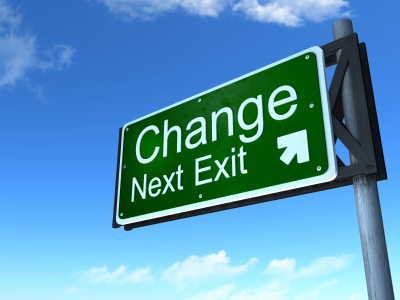Graham Scrivener tells us how to make the most of our learning events, long after they finish.
Behaviour change is crucial to business change. In fact, according to research by the Economist Intelligence Unit, behaviour change in the organisation is "the most important measure in determining the success of a change initiative."
However, according to research into the subject [1], only 14% of companies are effective at sustaining behaviour change. The culprit: many organisations focus on one off training events and do not implement processes to back the events up. In other words, most organisations spend the bulk of their resources on equipping people with new skills and knowledge, but not on aligning individual employees' goals to those of the company, or sustaining the new skills learnt (this is the key bit for achieving the change).
Learning events will always be beneficial, but the desired results will not be realised unless the learning is sustained. Business leaders must plan the sustaining process way before they start to equip their employees. In other words, to make the application of learning consistent and effective, equal attention must be paid to what happens after the learning event – not just what happens during it. Behaviour change that drives business change requires more than a training solution. It requires a carefully designed system in which each piece contributes to the whole.
 "To improve focus on aligning employees to the learning process, organisations must ensure learners see the connection between business goals, individual performance and learning opportunities."
"To improve focus on aligning employees to the learning process, organisations must ensure learners see the connection between business goals, individual performance and learning opportunities."To improve focus on aligning employees to the learning process, organisations must ensure learners see the connection between business goals, individual performance and learning opportunities. They must make sure that learners understand the reasons why they are learning and that they can apply their new found skills to real situations. Once employees are fully aligned, it is crucial to sustain what has been learnt: making sure the process of continued application is understood, and opportunities to put new skills into practice are provided, with suitable back-up from managers.
Before the Learning: Aligning stakeholders and creating a measurement strategy
Sustaining behaviour change starts long before there is anything to sustain. First, senior stakeholders must agree on which behaviours will drive execution of their strategy, and how those behaviours will be measured. The importance of this step cannot be overstated. In our survey data, 'lack of management commitment' is the chief reason why behaviour change is not sustained.
To make the behaviour change successful it is critical to get the right people in on one conversation: executive sponsors, business leaders, subject-matter experts, core team members, people playing analytics roles, and people representing marketing, finance, and strategy functions. This meeting, catalyses the measurement strategy - and commitment.
The benefits of this approach are many: the measurement and sustainment strategy is grounded in reality, the strategy is viewed as credible, and clear roles and responsibilities helps the team move quickly and efficiently from talk to action.
During the learning event: Choosing the right content and methods to drive behaviour change
After gaining alignment on the measurement strategy, it is time to choose the learning methodology and content that will equip people with the skills they need to support the change. This is the 'equip' phase. These six principles of learning serve as guideposts for designing effective learning programmes:
- Link learning to value for the individual and the organisation
- Connect action and reflection in a continuous cycle
- Address learners attitudes and beliefs in addition to their behaviours
- Provide learners with a balance of challenge and support
- Create opportunities for participants to teach as well as learn
- Design and cultivate learning communities along with learning media
These principles apply to traditional classroom experiences and beyond.
After the learning event: Making behaviour change stick
Effective leaders know that this learning phase - sustain - has the most impact on behaviour change. To make the application of learning more consistent and effective, we must pay equal attention to what happens after the learning event as to what happens in the learning event.
"Business leaders need to understand that the impact of results achieved through the correct ratio of aligning, equipping and sustaining behaviour change is far more beneficial to their organisation than merely supplying employees with new skills."
In the past, L&D organisations typically focused on the elements of learning over which they had the most control, which meant the formal learning event - its timing, structure, and content. Our survey data, however, show a shift occurring. Not only do our respondents see the sustainment phase as critical, but the vast majority believes that managers or learners, rather than the L&D organisation, have the main accountability for sustaining learning and behaviour change after the training.
Business leaders need to understand that the impact of results achieved through the correct ratio of aligning, equipping and sustaining behaviour change is far more beneficial to their organisation than merely supplying employees with new skills. The focus needs to be shifted to equipping employees with the mastery of the skills they have learnt over an extended period of time, rather than throwing them in at the deep end and expecting them to swim. Once this is realised, there will be no end of benefits; crucially including a better result for the bottom line.
Graham Scrivener is the managing director of Forum's European, Middle East and Africa division. Forum is an international sales, service and leadership training provider. For 40 years they have helped organisations implement workplace learning solutions that lead to behaviour change linked to specific business outcomes









